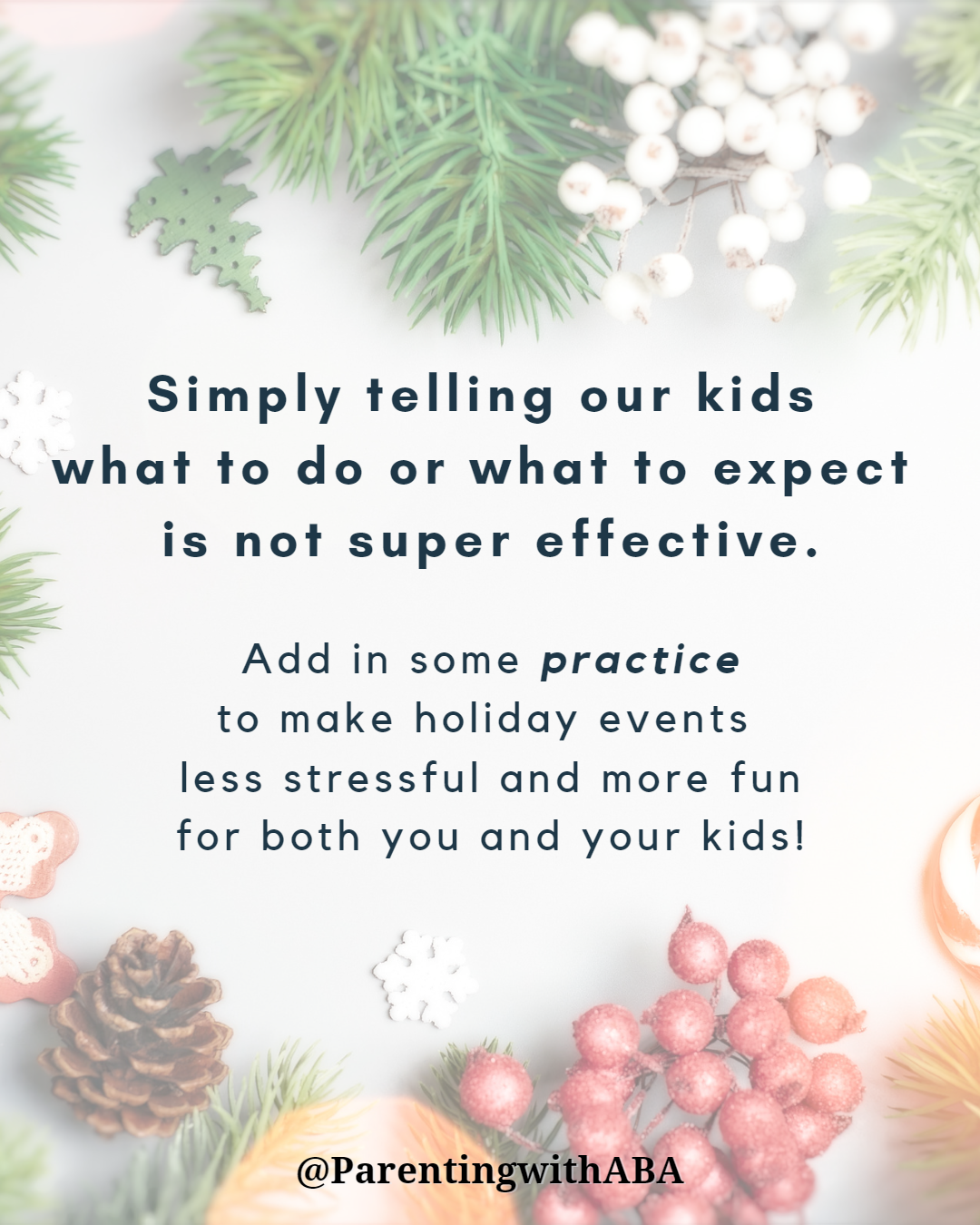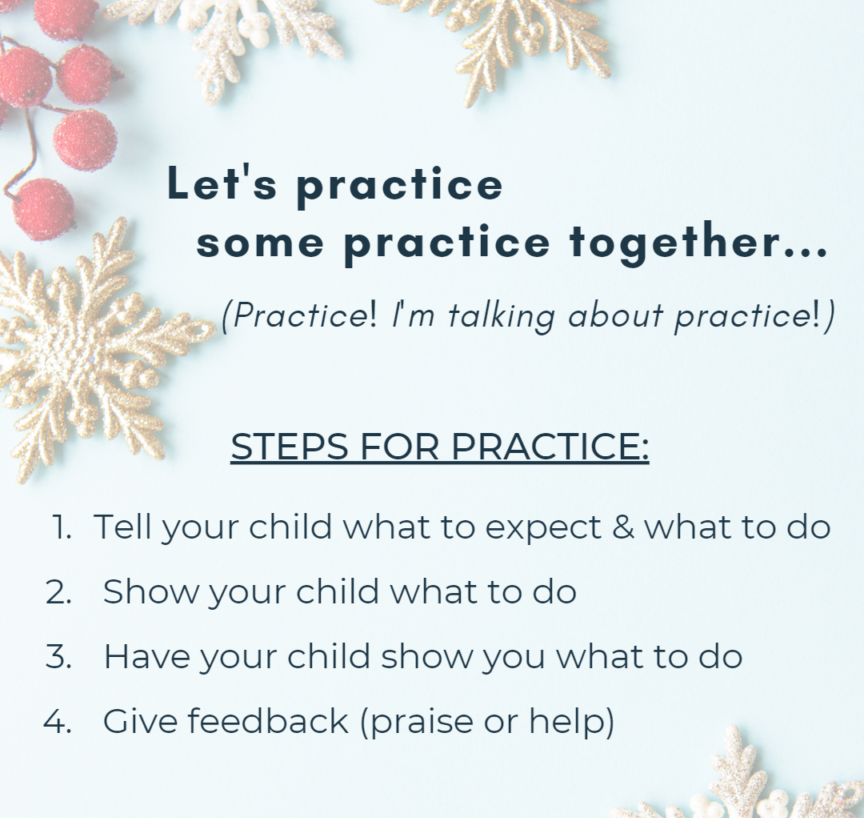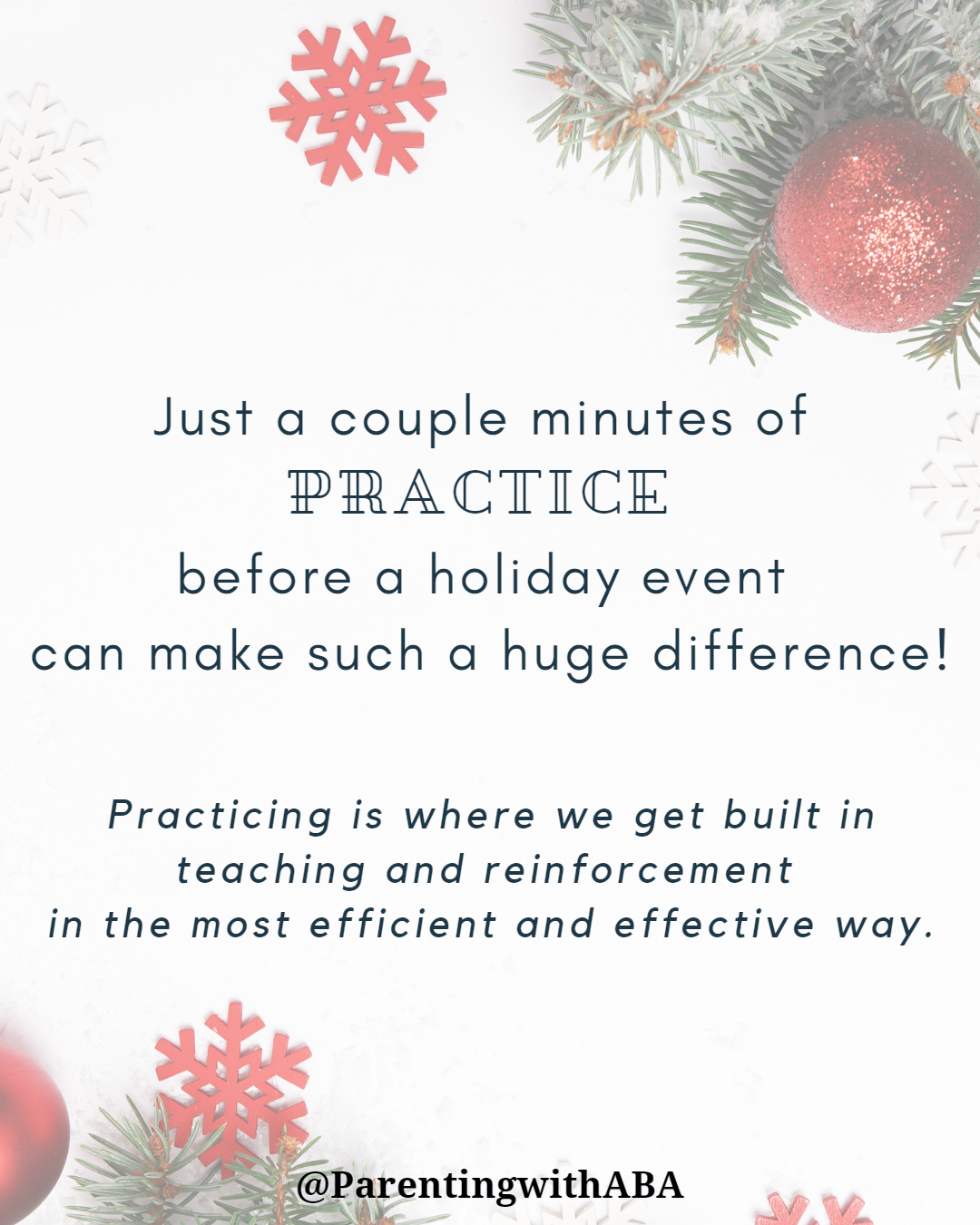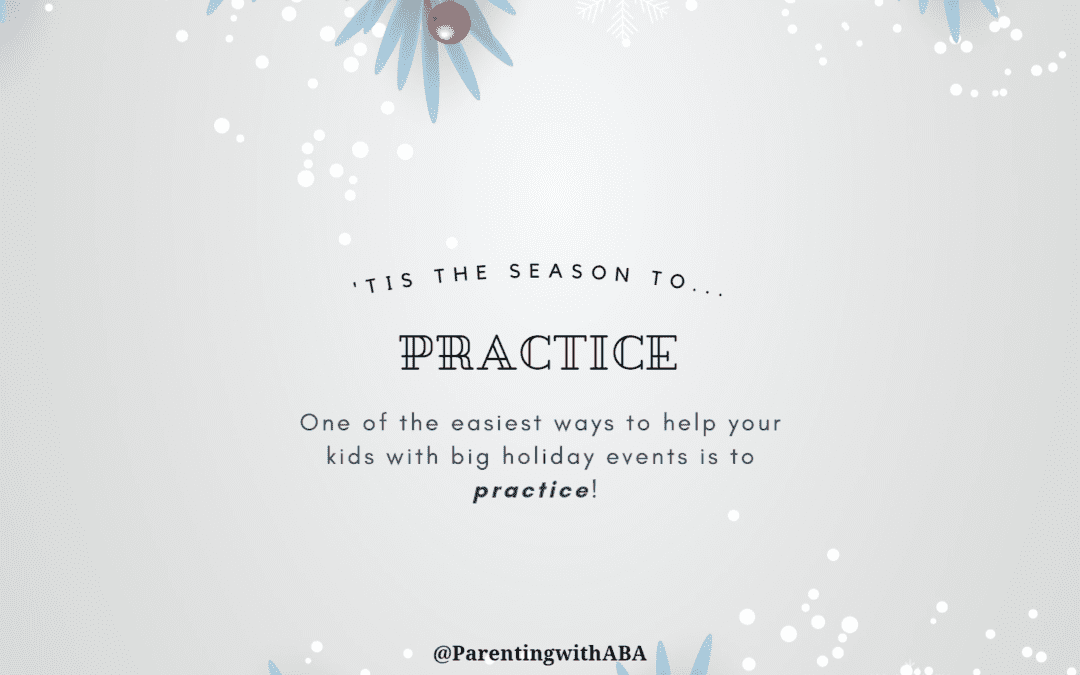When you think of all the chaos of your next big holiday event or family gathering, what worries jump to your mind? What are those worst case scenarios your brain is playing for you?
Sometimes all the schedule and routine changes can be hard for our kids. Later bedtimes, loud & overstimulating activities, being around lots of people- all the fun of holiday activities comes with some extra less fun sidekicks.
One of the easiest ways to make holiday events run more smoothly for your kids (and ultimately more fun for everyone) is this: practice. Practice ahead of time what things might look like!
You’ll be using a behavior tool called Behavior Skills Training that is backed by a TON of research- so why wouldn’t it work in your home? But you don’t need to use that long name. We just call it practice.
Read this in Ted Lasso’s voice (or any other parody of the 2002 press conference): “Practice? I’m talking about practice! We’re talking about practice!”

Behavior Skills Training is defined as these 4 steps in order.
- Instructions
- Modeling
- Rehearsal
- Feedback
Meaning….
Practice looks like this:
- I tell you.
- I show you the kid part.
- You show me the kid part.
- I give you praise or help.
As parents we’re really good at telling our kids what to do. I mean that’s 99% of a parents’ job, right? Bossing our kids around? At least that’s what my daughters would say my job is. But just telling them- how is that working for you? Is it super effective? Probably not. That’s why we have these extra steps. And here’s the deal. Once you get the hang of the sequence of practice, you can do all 4 steps in 60 seconds. It’s not a big long drawn out deal.
What you do is tell them what to expect. Then they get to be the parent and you are the kid showing the expected behavior. Now trade, you’re back to being the parent and they are the kid. They show you the appropriate or expected behavior. And you say “good job!” Boom. You’re done. Now when that situation comes up in real life at the upcoming holiday event- you can prompt or help them by acting out their part again (modeling) or giving little cues and hints instead of nagging or getting upset with them. And when they do it correctly? You notice and appreciate it! Lay that positive reinforcement on thick!

Let’s practice some practice together. Practice! I’m talking about practice!
Scenario One:
- “We are going to the Nutcracker ballet. We are expected to sit quietly and watch. If you just can’t sit still or be quiet anymore, tap me on the arm and point to the door. I’ll take you out into the lobby for a break.”
- “Now you be the mom, and I’m going to sit next to you as the wiggly kid.” – Tap your kid on the arm and point to the door. (Be silly and make silly wiggly movements or faces to get your kid into having fun practicing with you.)
- “Now I’m back to being mom and you are you. Show me what to do when sitting still and quiet becomes a struggle for you at the ballet.” – Don’t stop this step until your child does it correctly. If they are being too silly because you started it in step 2, just redirect that you need to practice it correctly.
- Give attention and praise now. In the moment if your child is getting too loud or wiggly at the ballet, you can tap yourself on the arm to model it, point to the door, etc. You have a built in prompt or cue because you practiced!
Should we do another practice? Practice! I’m talking about practice!
Scenario Two:
- “We are going to Aunt Marge’s house for Thanksgiving/ Christmas/ Hannukah/ Tuesday dinner. I think there will be a lot of people there. I expect it to be loud and for some of the food to be different for us- like jello-based salad things. We are bringing food that you do like, but here’s the behavior you need to do- say ‘thank you’ to Aunt Marge and ‘no thank you’ if others offer you food or want to play a game or try to hug you when you don’t want to. Anything you don’t like- just say ‘no thank you.’ When we say ‘hello’ and ‘goodbye’ to Aunt Marge – we say ‘thank you.’ That’s it. Let’s practice!”
- “You be the other grownups and offer me something kinda weird to eat.” – “No thank you.” – “Now be Aunt Marge and greet me at the door.” – “Thank you for having us.”
- “Trade jobs. I’m the other grownups and you are you.” (Use a silly voice to get into character): “I’m Aunt Marge. Welcome to my home that is loud and full of people at the moment.” Child says: “thank you.” – (New silly voice to be a new character): “I’m Great Uncle Bob, here try some green jello goo salad with raisins in it.” – Child says, ‘no thank you.’
- Give attention and praise in the moment. At the event, model this behavior in front of your kids as much as possible so they remember to say ‘thank you’ or ‘no thank you.’

You probably already talk about things ahead of time and review expectations in the car on the way- but adding in just a couple minutes of practice can make a huge difference. Just talking about things can only go so far. Practicing them is where we get real teaching and reinforcement built in- but in the most time effective and efficient way.
Remember- don’t stop at step 1. Do all 4 of these.
- I tell you.
- I show you the kid part.
- You show me the kid part.
- I give you praise or help.
Now go try some practice! Practice! I’m talking about practice!
And if you’d like to get in a little personal practice on simple strategies to instill more joy (without adding stress) to your holiday season, join us for the Meaningful Holidays Challenge. Together we can find ways to practice techniques that will allow us to make the holidays more memorable and less overwhelming.
Click the link to save your spot! Hope to see you there!

Recent Comments